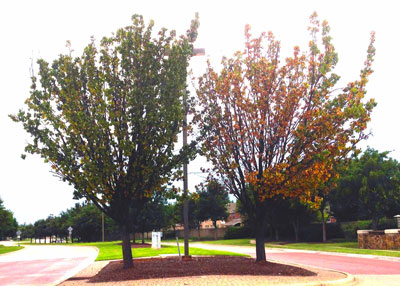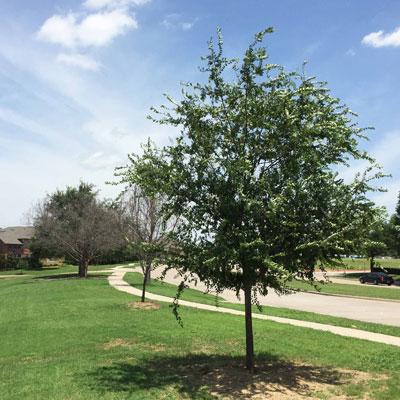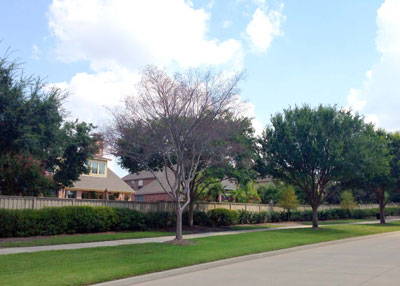Explaining “Root Rot”
A man named Greg called my program last Sunday. I had been talking about Chinese pistachios and the fact that they are not especially susceptible to the cotton root rot fungus – at least, not from my life’s experiences.
Greg had been told by an arborist that a tree he lost over the winter had died from it. But then he continued using the shorter phrase “root rot” as he described the “bowl” his tree was growing in, and how he had put a soaker hose around the tree to keep annual flowers watered last year. That extra watering, combined with the 70 inches of rain DFW had last year had killed his tree, or at least that’s what the arborist told him.
So that’s when I explained that those two terms are not the same, and that they are commonly confused. Here are some of the differences.
Root rot due to excessive moisture is not necessarily pathologically driven. The water table in the soil rises near the surface and the plants simply don’t have any oxygen. Roots die (“drown”), and the plants die. They will wilt, even though the soil is moist or wet. Obviously watering isn’t going to help. This can happen to all kinds of plants, and it can happen at any time of the year, even over the winter (as was Greg’s case). Other than aquatics that can live at lake’s edge, no plant will survive long periods of waterlogged soil.
Cotton root rot, by comparison, is due to disease, caused by the specific fungus Phymatotrichum omnivorum. That species name “omnivorum” suggests that this disease kills lots of kinds of plants.

Apples and pears (shown) are extremely susceptible to the cotton root rot fungus. The fungus travels slowly in the soil, but the plant to the left won’t last much longer.
Cotton root rot is an extremely damaging disease that has essentially shut down the cotton industry in many parts of Texas. It’s a hot-weather problem, most commonly showing up from late June through September. Plants die suddenly, often without wilting. I often compare it to cutting a tree or shrub off at the ground, then sticking its rootless trunk back in the soil. They suddenly turn brown or black, then crisp.
Leaf colors may change long before fall. Bradford pears are a prime target for it, and you’ll see a pallid lavender/maroon tint to the leaves months before they should normally be changing.

Look down the row and you’ll see two trees dead and another probably soon to follow. Click for a larger view of the photo.
You can often see the fungal strands on affected plants’ roots as you remove them. If you can’t see them, but you’d still like to confirm what has killed one of your plants, the Texas Plant Clinic at Texas A&M can culture and identify the source of your problem. There is a charge, but that would give you the knowledge of whether other plants can be used there.
Cotton root rot only appears in alkaline soils. Some have tried adding massive amounts of sulfur to acidify the soil, thereby slowing the cotton root rot development, that’s not always successful. Planting in highly amended soils to which you have added several inches of acidic organic matter (sphagnum peat, compost, etc.) will help. But otherwise, there are no means of prevention or cure.

This curbside planting of lacebark elms in the alkaline Backland Prairie soils north of DFW extends for about a mile on this street. More have died in the two years since I took this photo.
Having lived in a cotton root rot zone in Texas (DFW) for 46 years, I have learned to concentrate my landscaping on resistant plants. Pecans, cedar elms, oaks, magnolias, hollies, crape myrtles, nandinas, junipers, liriope and mondograss and ornamental and turf grasses are highly resistant or basically immune to it. Here is a much more thorough list from Texas A&M. It’s from 35 years ago, but nothing at all has changed.
If you want to read still more on this disease, this TAMU fact sheet should keep you busy for a couple of months. It even goes into field crops.
